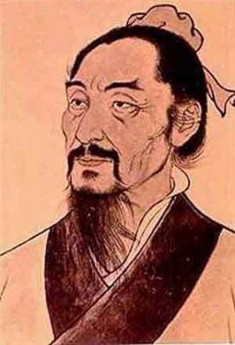The History of Photography - Black & White Development
As it is the beginning of the year and I have not yet covered this subject in one of my blogs, I have decided to give you a brief History of Photography. As we have come so far in the last 2 centuries, I will have to break this into 3 parts. Concentrating on the development of basic photography, analogue black and white firstly. Then I'll give you a idea of how colour photography developed and lastly I'll jump into the development of the Digital Age...
Understanding Photography
To find the beginning of photography we have to look at what photography is. It is capturing light onto a durable 2 dimensional form, this can be on a copper plate or on a digital screen. Now to understand photography we have to understand light. Light is reflected off surfaces and objects and captured by the rods and cones on the retina at the back of our eyes. In photography we capture the same light and make a permanent representation of this reflected light.
The Philosophy
So if you look at photography as a science and an understanding of light you realize that it already started in the 5th-4th Century BC with the Greek and Chinese Philosophers when they started to describe the basic principles of light and optics. Founder of Mohism, Mo Zi contributed in basic concepts of linear optics, the straight line propagation of light and refraction of light, explaining the inverted image nature of an image in camera obscura. While Aristotle explained how a ray passing through a hole would project an image of whatever comes in it’s path on the opposite wall.
Mo Zi
The Science
Then a basic understanding of the nature of light and optics developed with Leonardo Da Vinci discovering the use of lenses to create sharper images and Hans Lippershey that created the first telescope in 1608. The telescope might seem far removed but that is exactly what a camera is. It uses convex and concave lenses to bend and manipulate light to enhance clarity and visibility. Our modern understanding of light and colour started when Newton refracted a ray of light into a spectrum of light. Proving that white light is composed of different colours of light.
Capturing light temporarily
In 1727, Johan Heinrich Schulze discovered that the darkening of various substances when mixed with silver nitrate is due to light and not heat as previously believed. He also used this phenomenon to temporarily capture shadows. He found a way to capture light but if wasn’t permanent. After him Thomas Wedgewood and Humphry Davy were able to beduse more substantial but still temporary shadow images on coated paper and leather around 1800.
View from the Window at Le Gras - Nicephore Niepce
Making it permanent
In 1816 Nicephore Niepce was able to photograph camera images on paper coated with silver chloride, but was also unable to make it light fast and the image had to be exposed for 8 hours. It was only in 1835 that Willian Fenry Fox Talbot created the first successful camera photographs using paper sensitized with silver chloride. As he created a negative to reproduce, the exposure time was n hour or more to create a suitable negative.
Photography becomes public
After Sir John Herschel coined the term photography in 1839, the French Artist Louis Daguerre invented the ‘Daguerreotype’ process of photography. The Daguerreotype is the process of using a sheet of silver plated copper, exposed through a camera to light, resulting a latent image. This latent image will be made visible by fuming it with mercury vapor and removing it’s light sensitivity by a liquid chemical treatment. It was the first photographic process that was available publicly, needed less than 30 minutes exposure and most commonly used for nearly 20 years.
In 1841 Talbot introduced the calotype or talbotype to the public, which used paper instead of metal sheets, but it did not displace the daguerreotype. Although the Calotype was the first negative-positive process, giving you the possibility to reproduce the image, it created a less clear image than the daguerreotype. The use of paper as a negative was not ideal as the texture and fibres were visible on the prints made.
Salt print from a glass collodion negative - The J. Paul Getty Museum
Speeding it up
Ten year later the invention of the Collodion process offered clearer images with 2-3 second exposures. This technique was invented by Englishman Frederick Scott Archer. A glass plate was coated with silver iodide and exposed in a camera while still wet. After which it was developed and fixed to create a clear detailed negative. These negatives still needed to be developed immediately as it became waterproof when dry.
George Eastman, founder of Kodak
And then there was Kodak...
Richard Leach Maddox invented the gelatin dry plate silver bromide process in 1871, which allowed negatives not to be developed immediately. Before long the emulsion could be coated on celluloid roll film. This is where George Eastman invented flexible, paper-based photographic film in 1884, popularizing the use of film and making photography more mainstream. He was the founder of the Eastman Kodak Company. In 1888 he perfected the Kodak Black camera, the first camera to house a roll of film.
After establishing a stable portable and affordable photographic process, people now wanted colour...






